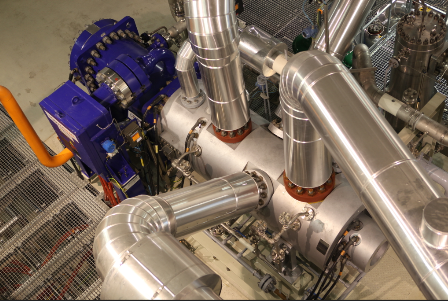
Natural gas abounds in North America. At the end of 2016, Canada and the U.S. shared 414 trillion cubic feet of proved reserves, with the U.S. the world’s largest producer and Canada the fourth largest. Unsurprisingly, there’s a keen appetite for developing LNG facilities across the continent.
In recent years, we’ve seen several large-scale LNG projects taking shape, including five new export terminals coming online in 2018 and 2019. Once in operation, they will make the U.S. one of the top three LNG exporters in the world.
Over the years, an extensive pipeline network has spread over a vast area — and this presents some exciting opportunities in terms of gas compression. Historically, the mid-stream market has been dominated by gas turbine technology, with conventional low-speed electric compression barely getting a look-in.
But that’s about to change. Indeed, I see four new trends that are helping to catalyze a favorable environment for electrical compression technology in this part of the world:
Shifting attitudes: Electric vehicles, vessels and even planes are edging ahead, showcasing the strength and potential of electrification. Similarly, engineers and operators are increasingly convinced that electrical technologies are now mature enough to be considered viable options for the gas industry. This was not the case a few years ago.
Tighter regulations: Some states are changing mandates to limit emissions, environmental footprint and noise in proximity to cities. This is forcing new approaches as customers seek low-emission solutions that help facilitate faster government authorization.
Shrinking talent pool: Many oil and gas operators are reaching retirement and the capacity of project teams to address maintenance is diminishing. To stay competitive and reduce costs, companies are having to adopt new technologies that require fewer maintenance hours.
A better electricity network: The vast grid network in the North American region is largely matured and can provide reliable power at all times. The readily available, stable supply of electricity again opens doors for adopting electrical solutions at scale.
In terms of electrical compression solutions, there’s also an exciting evolution on the horizon that provides a viable and attractive option for the North American market. Integrated machines that encase a suite of innovations and, most importantly, steer away from the need for a gearbox and connect the compressor directly to the motor is, to me, the natural next step for gas compressor solutions. Here’s why:
Why integrated machines offer a bright future
Such is the case that a gas supplier using integrated machines is able to respond rapidly to surges in demand (due to a power outage or unexpected cold weather, for example) and release gas from storage into the market. In this way, they’re able to secure the highest price every time, and maximize their revenue.
At GE, we’ve been able to deliver an integrated machine that leverages proven technology from across our business. Packaged by BHGE, our Integrated Compressor Line combines the centrifugal compressor from their Turbomachinery & Process Solutions and the high-speed electric motor from GE’s Power Conversion business. Both equipment is sealed in a single casing, with no need for lubrication, thanks to active magnetic bearings technology.
The motor — which has clocked up four million hours of successful operations over 15 years — requires very little maintenance. Customers can also choose to have a one of our resident engineers available over the warranty period, as well as a spare motor readily available on U.S. soil, in case of the highly unlikely event of failure.
What’s particularly attractive is the option to integrate data analytics for the variable frequency drive, motor, compressor and bearing. It’s then possible to access the data remotely and identify potential faults or deterioration before they become an issue. In this way, customers can move to a predictive maintenance model, minimizing potential downtime and costs even further.
As an oil-free, zero-emission solution, integrated electrical compression technology lowers risks and costs and allows gas suppliers to respond more quickly to market demand. The fact that electrification is now widely recognized as a mature technology overcomes a major barrier to adoption within the industry. Integrated machines are the next step in the evolution of the electrical gas compressor, and for the growing North American market, I believe they’re a perfect match.
The Author
Azeez Mohammed is president & CEO of GE’s Power Conversion business.